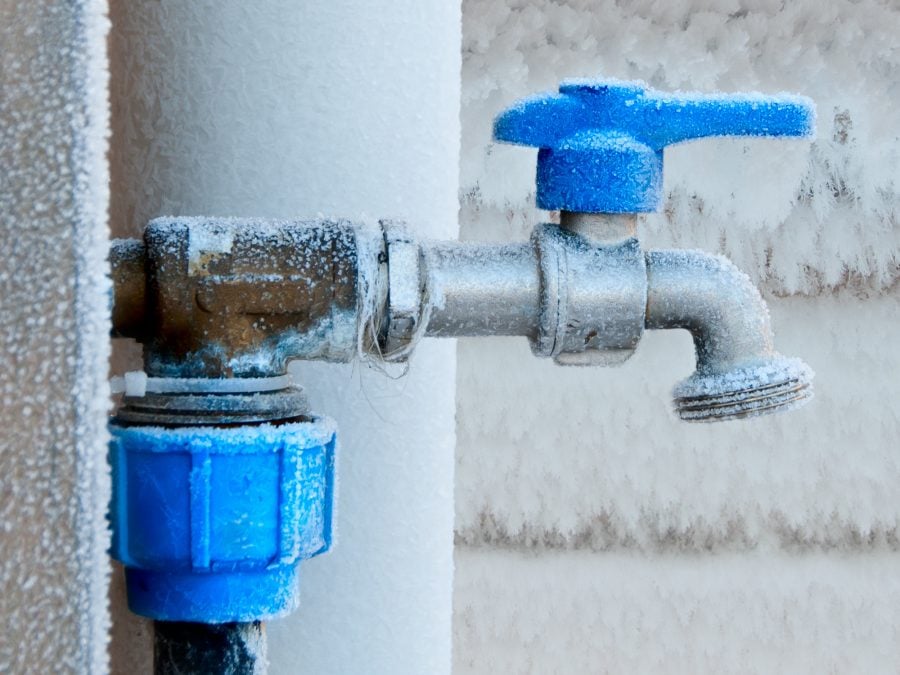How to Avoid Frozen Pipes in Cold Weather: Expert Advice
How to Avoid Frozen Pipes in Cold Weather: Expert Advice
Blog Article
Just how do you really feel on the subject of How to prepare your home plumbing for winter weather?

Winter can ruin your plumbing, specifically by freezing pipes. Here's just how to avoid it from taking place and what to do if it does.
Introduction
As temperature levels drop, the threat of icy pipes boosts, potentially causing costly repairs and water damages. Recognizing exactly how to avoid icy pipes is crucial for house owners in chilly environments.
Comprehending Frozen Pipes
What triggers pipes to ice up?
Pipelines freeze when subjected to temperatures listed below 32 ° F (0 ° C) for extended durations. As water inside the pipes freezes, it increases, taxing the pipe wall surfaces and potentially creating them to break.
Threats and problems
Icy pipes can lead to water supply disruptions, home damages, and expensive fixings. Burst pipes can flood homes and cause comprehensive structural damage.
Indications of Frozen Pipes
Determining icy pipelines early can stop them from rupturing.
How to identify frozen pipes
Look for decreased water circulation from taps, uncommon odors or noises from pipes, and noticeable frost on revealed pipes.
Avoidance Tips
Insulating at risk pipes
Cover pipes in insulation sleeves or use warmth tape to secure them from freezing temperatures. Concentrate on pipes in unheated or outside areas of the home.
Heating techniques
Keep interior areas sufficiently heated, specifically locations with pipes. Open cabinet doors to permit warm air to distribute around pipes under sinks.
Securing Outdoor Plumbing
Garden tubes and outdoor taps
Detach and drain pipes yard tubes before wintertime. Install frost-proof spigots or cover outdoor faucets with protected caps.
What to Do If Your Pipes Freeze
Immediate actions to take
If you think icy pipes, keep faucets open up to ease pressure as the ice melts. Make use of a hairdryer or towels taken in warm water to thaw pipelines gradually.
Long-Term Solutions
Architectural modifications
Think about rerouting pipes away from outside walls or unheated locations. Include additional insulation to attic rooms, basements, and crawl spaces.
Updating insulation
Invest in high-grade insulation for pipelines, attic rooms, and walls. Correct insulation aids maintain regular temperature levels and minimizes the risk of icy pipes.
Verdict
Stopping frozen pipelines needs positive measures and quick reactions. By recognizing the causes, indicators, and preventive measures, homeowners can shield their pipes during cold weather.
5 Ways to Prevent Frozen Pipes
Drain Outdoor Faucets and Disconnect Hoses
First, close the shut-off valve that controls the flow of water in the pipe to your outdoor faucet. Then, head outside to disconnect and drain your hose and open the outdoor faucet to allow the water to completely drain out of the line. Turn off the faucet when done. Finally, head back to the shut-off valve and drain the remaining water inside the pipe into a bucket or container. Additionally, if you have a home irrigation system, you should consider hiring an expert to clear the system of water each year.
Insulate Pipes
One of the best and most cost-effective methods for preventing frozen water pipes is to wrap your pipes with insulation. This is especially important for areas in your home that aren’t exposed to heat, such as an attic. We suggest using foam sleeves, which can typically be found at your local hardware store.
Keep Heat Running at 65
Your pipes are located inside your walls, and the temperature there is much colder than the rest of the house. To prevent your pipes from freezing, The Insurance Information Institute suggests that you keep your home heated to at least 65 degrees, even when traveling. You may want to invest in smart devices that can keep an eye on the temperature in your home while you’re away.
Leave Water Dripping
Moving water — even a small trickle — can prevent ice from forming inside your pipes. When freezing temps are imminent, start a drip of water from all faucets that serve exposed pipes. Leaving a few faucets running will also help relieve pressure inside the pipes and help prevent a rupture if the water inside freezes.
Open Cupboard Doors
Warm your kitchen and bathroom pipes by opening cupboards and vanities. You should also leave your interior doors ajar to help warm air circulate evenly throughout your home.

I'm certainly very taken with Winter Plumbing Precautions: Preventing Frozen Pipes and I hope you enjoyed our blog posting. Kindly take a moment to promote this write-up if you appreciated it. Many thanks for being here. Kindly check up our blog back soon.
Browse Our Site Report this page